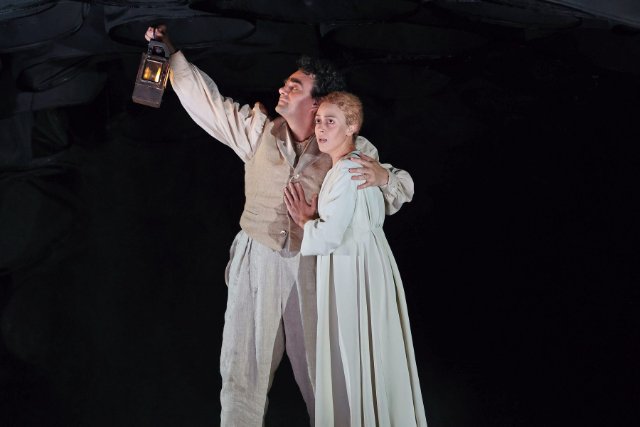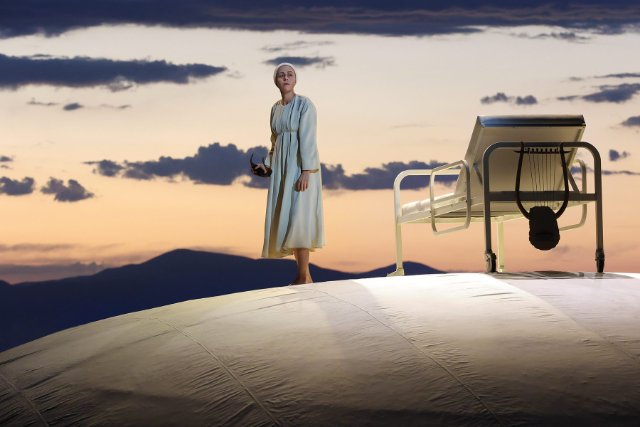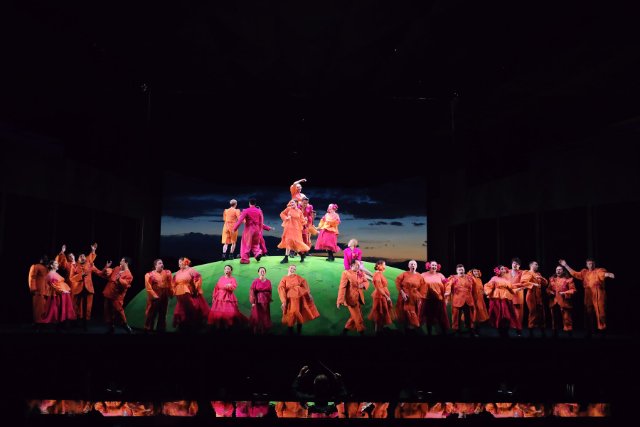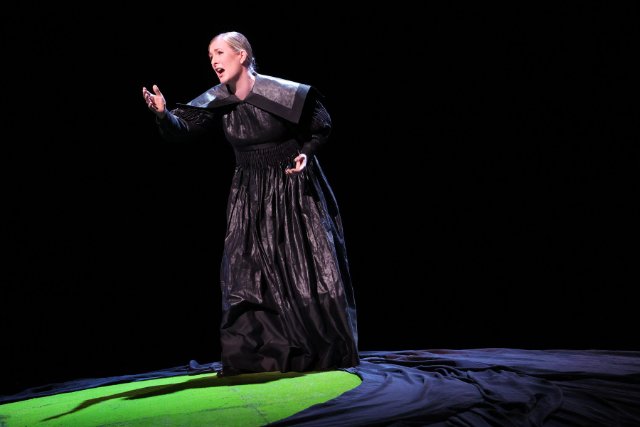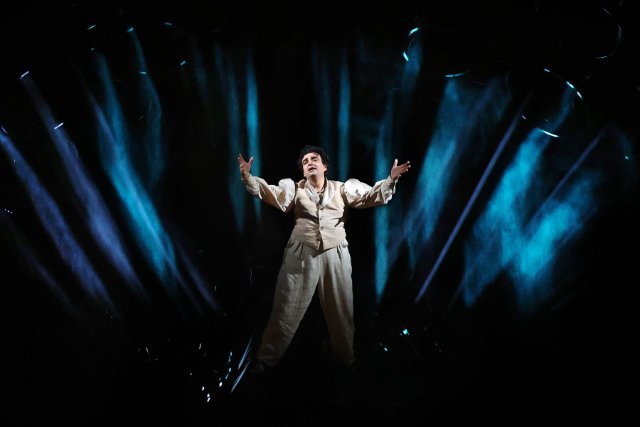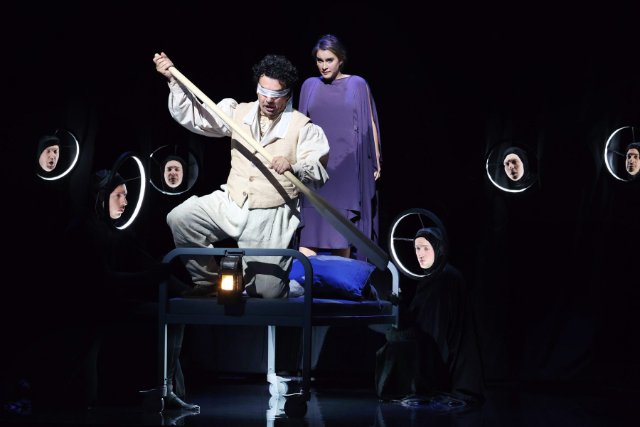Orfeo
A Scintillating World Premiere Orchestration of This Oldest Opera
By: Victor Cordell - Aug 03, 2023
Love versus duty. All too often, the world’s highly accomplished individuals find that they must sacrifice relationships to achieve goals that will yield personal glory. Conversely, lovers sometimes lack the discipline or motivation for greatness.
Orfeo (Orpheus), demigod and son of Apollo, is challenged to follow strict guidance and not to submit to his personal urges. His attempt to retrieve his beloved Euridice from the underworld is oft retold and revised in every form of literary endeavor. Thus, it should be no surprise that Claudio Monteverdi’s “Orfeo” would be the earliest extant opera that holds a place in the modern repertoire. Santa Fe Opera’s stunning production showcases the work’s music in a fresh and appealing manner and offers a vivid visual interpretation of the narrative.
Composed in 1607, the score of “Orfeo” bridged Renaissance and early Baroque music. In common with musical dramas of the time that would later be known as operas, music was composed to enhance existing dramas. Composers like Monteverdi would create a continuo, a bass line usually played by a keyboard with harmonies and their instruments specified. They would not fully detail the scores for each instrument, leaving that to the individual production.
As a result, this opera has been orchestrated by a number of conductors and composers. Santa Fe Opera commissioned Nico Muhly to premiere a new orchestration that is designed for modern, rather than period instruments. Although the original continuo is observed, the result is a more contemporary treatment that eliminates the sometimes tinkly clanginess of period instruments to provide a warmer, smoother sound.
The most distinguishing feature of this production is its brilliant staging. Overall, scenario goes from light to dark to sunrise in a manner that only Santa Fe can provide. Early sequences surrounding Orfeo and Euridice’s marriage feature La Musica (Music), performed by Lauren Snouffer, who sings with a fine Baroque tremolo. Festivities take place on a stage whose set is comprised of a huge green mound. One assumes that Visual Environment Designers Alex Schweder and Matthew Johnson were purposefully playful with the connection of the hemispheric feature’s shape and color to the composer’s name.
Apart from the main principals who have their own unique costumery, the stage is filled with raucous, gallivanting choristers who don orange and pink garb that is reminiscent of a large gathering of Hare Krishnas. The score utilizes the chorus extensively, and since it is comprised of apprentice singers, the quality of the chorus’s sound is always superb and the acting always as required.
Putting a stop to the gaiety, La Messaggera (Messenger), portrayed by a delightful Paula Murrihy, announces that Euridice has died and descended to the underworld. This occurs in a staging manner that only Santa Fe can offer. For the scenes that occur in the living world, the back wall of the stage is open to nature - the mountain landscape and skies behind. As darkness descends figuratively in the opera, it also descends literally in the natural backdrop. Plus, ominous storm clouds and rain that were developing in the distance at this performance added to the chilling appearance.
Orfeo’s crossing into the underworld to retrieve Euridice provides the most striking visuals. In almost total darkness, the hemisphere lifts to create a giant clamshell-like feature that envelopes Orfeo. This is lead performer Rolando Villazón’s time to shine. Not only is he spotlit on the stage which he has to himself for an extended soliloquy, but he is suspended in air on cables and writhing the whole time. He does a remarkable job to maintain his voice under those conditions.
Director Yuval Sharon does an excellent job with overall production design. Yuki Nakase Link’s lighting also deserves recognition, especially in the fearsome underworld, where in the darkness, light darts and undulates on smoke, and the chorus is adorned with neon features.
The uncontrollables are the Achilles heel. This work is worth seeing for its historical importance, staging, and performances. but to the modern sensibility its weaknesses are that the music and drama don’t meet standards of later operas. The music is pleasant and well conducted by Harry Bicket, but singing is in recitative without melodious arias and without the challenges of singing in high ranges. And while the situations are certainly dramatic, the delivery is almost completely in oratorio style. Storytelling and internal revelations dominate with little action or interaction among characters.
Also, while one of the glories that makes opera such a unique and compelling art is the display of the power of the unamplified, well-trained human voice, microphones were used in this performance. The lead principals sounded fine, but their voices were not properly tested.
“Orfeo,” composed by Claudio Monteverdi and libretto by Alessandro Striggio with world premiere orchestration by Nico Muhly is produced by Santa Fe Opera and plays at its home at 301 Opera Drive, Santa Fe, NM through August 24, 2023.

